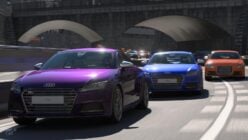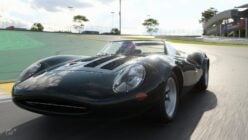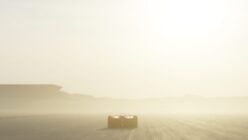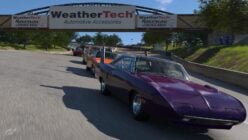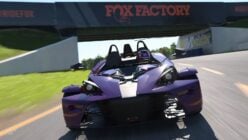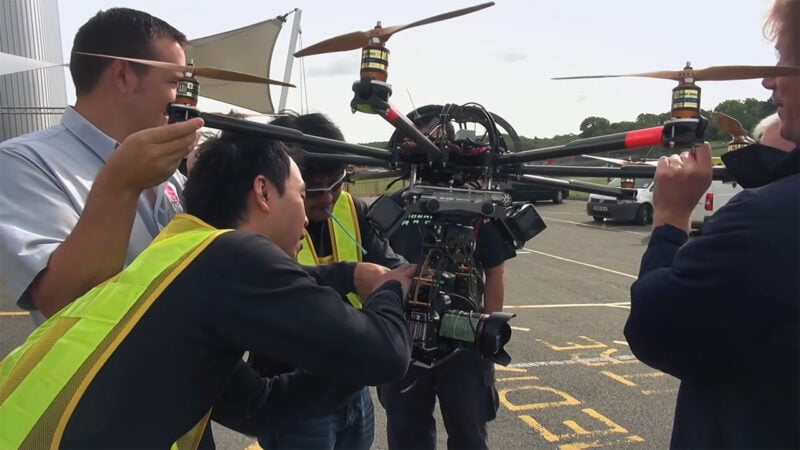
Along with Kazunori Yamauchi opening the Computer Entertainment Developers Conference (CEDEC) 2022 with a keynote speech, Polyphony Digital has taken part in a session presenting some of its circuit modeling methods.
The session, titled “Case Study of Surveying Technology and Exterior Design in Gran Turismo 7 Course Production” and presented by Yuhei Kitada and Taro Ozaki of PD’s landscape team, ran for about an hour and looked at both surveying real circuits and the environment design of fictional ones.
Unfortunately the live stream during which the presentation occurred has subsequently been removed, and CEDEC has yet to publish a short-form video of the session. However our colleagues at 4gamer.net were able to catch the original along with screenshots of the event.
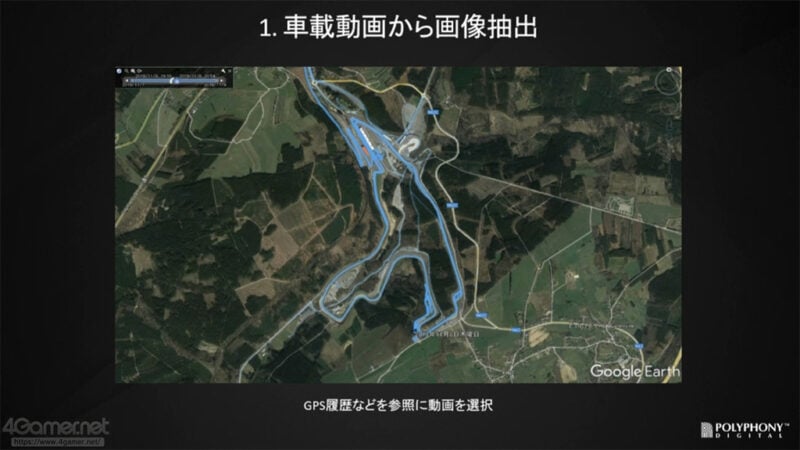
The presentation consisted of two sections, starting with the techniques and data used to survey the real circuits for digital recreation.
A crew of artists, photographers, and videographers will visit the site for the survey process, which consists of a number of different methods.
Laser-scanning is arguably the most important from a structural point of view. The crew uses a vehicle-mounted laser scan to accurately survey the road surface, run-off areas, track furniture, and buildings nearby.
A vehicle is also used to capture video of the circuit. Shooting at 30 frames per second, the crew will dawdle around the track at just 10mph to gather information for photogrammetry; that results in a lot of data, with one pass of Spa-Francorchamps reportedly taking up 8TB.
This is actually a slightly trickier process than you might realize, as bright and highly reflective areas — like the sky or buildings — and any moving objects affect the capture process. These have to be masked from the resulting image output.
In addition there’s also a UAV survey, with a large drone photographing the circuit but primarily in the paddock and off-track landscape. Finally there’s also direct stills photography, both from crew members on the ground and in a helicopter.
Combined with GPS data, that all gives PD enough information to create a 3D environment mesh and apply image data to relevant surfaces, including tire marks, oil stains, and even graffiti. The results are sufficiently accurate to earn FIA certification.
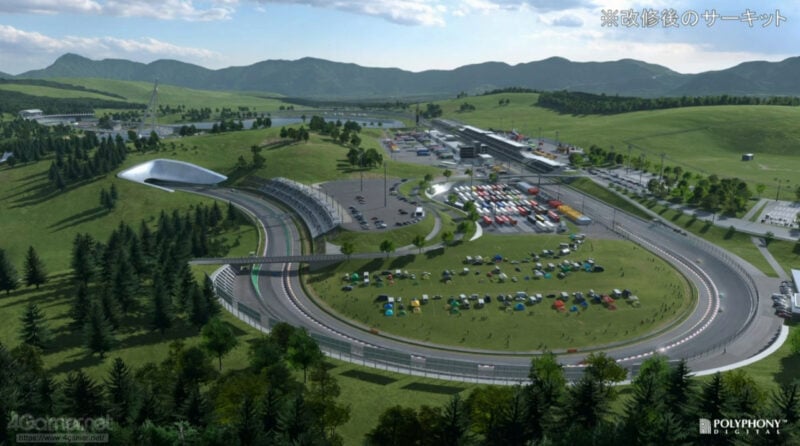
Naturally none of this information is available for fictional circuits, and Polyphony’s approach is to make the design realistic but to allow players to experience something different from real-world circuits. One example given of this is tunnels.
Tunnels rarely appear on a real-world track for pretty obvious safety reasons — it’ll likely take a while to think of any track with a tunnel other than the open-cut Larvotto tunnel at Monaco. However “original” circuits aren’t so limited, and the change in light and sound gives a unique experience only possible in a fictional setting.
However in order to maintain an equivalent level of reality to a real circuit, the team must use similar processes for the real world circuits, particularly when it comes to the road surface and environment.
Even here, the landscape team must visit the location where the circuit is intended to be, scanning the terrain and plants to create a realistic environment. The example presented in the session was Kyoto Driving Park, which is set in a basin in the northern mountains around Kyoto; the team visited Kitayama and photographed the famous cedar trees for use in the virtual track.
In order to break up the landscape, the team decided to put in some more buildings but, in order to retain realism, opted to do so according to local planning regulations. That resulted in the “museum of contemporary arts and crafts” that you’ll find at Kyoto Miyabi and the combined track — which wasn’t present in GT Sport.
This building was chosen and designed to fit into the local regulations, with its own back-story in which it contributes to culture — by providing a place to display artworks not available nearby — and attracts tourism. High Speed Ring’s centerpiece cantilever spar cable-stayed bridge was also highlighted as a structure reworked from its previous appearances.
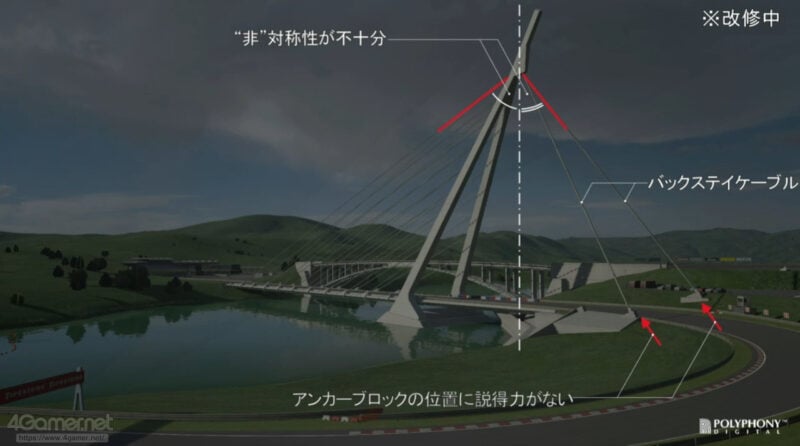
See more articles on Polyphony Digital.

